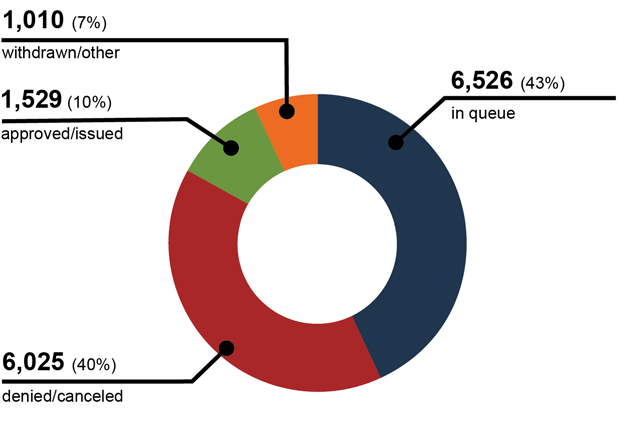February 28, 2018
On February 27, the House Subcommittee on Aviation held a hearing to address the current status of aviation security. The hearing was convened at an interesting time; although the Committee has not held an event regarding aviation safety in three years, American aviation is currently the safest it has ever been. 2017 was the fourth year in a row where passenger fatalities in U.S. airline service were zero. (And the average in the ten years before that was only 15 fatalities per year.)
The hearing included a panel of five witnesses, all with various experience and knowledge with aviation security and regulation:
- Ali Bahrami is the Associate Administrator for Aviation Safety at the Federal Aviation Administration;
- Akbar Sultan is the Deputy Director of Airspace Operations and Safety Programs for the National Aeronautics and Space Administration;
- John DeLisi is the Director of the Office of Aviation Safety for the National Transportation Safety Board;
- Matthew Hampton is the Assistant Inspector General for Aviation Audits at the Office of Inspector General of the US Department of Transportation;
- Captain Tim Canoll is the President of the Airline Pilots Association, International.
Because aviation safety is currently so well regulated, the usual purpose of a safety oversight hearing – to assign blame for something that has gone wrong – was not really valid. Many of the Representatives took the opportunity to steer the conversation toward drone policy and national airspace regulation of unmanned aircraft systems. Full committee Ranking Member Peter DeFazio (D-OR) began the conversation on unmanned aircraft by asking if the current regulations on the FAA were appropriate.
(The FAA has been trying to regulate drones using laws last updated by Congress in a 2012 reauthorization law, but the state of the technology and its availability have changed so much in the last six years that FAA regulations are having a hard time keeping up.)
DeFazio specifically referred to an example from his home state in which the courts ruled that owners cannot be asked to register or license their drones and therefore those aircrafts cannot be tracked in any manner.
This question became a catalyst for further discussion as to what the federal government’s role actually is in regulating drones in the national airspace. Captain Canoll explained that if these technologies have the capability to enter the national airspace as commercial and military aircraft do, then they should be regulated in the same manner. He argued that a large concern in the current discussions of how to address regulations is that legislators want an entirely new set of policies, when in reality; he argues that these programs should align.
Bahrami explained that one of the largest concerns is how to maintain proof of a sighting or collision. Beyond eyewitness testimony, there is currently no implemented way for the FAA can prove a drone inappropriately entered or utilized the national airspace. Bahrami explained that the FAA is developing programs such as remote ID to combat these issues, but drone regulation is limited under the 2012 FAA reauthorization.
And there is a long wait list for requests for waiver from the existing FAA regulations. The Inspector General’s office included a helpful infographic in its written testimony showing that the FAA has received over 15,000 request for waivers of the UAS rules. 40 percent were denied, 10 percent approved, but 43 percent (over 6,500 requests) are still pending.

Mr. Sultan also explained that NASA has taken on initiatives to investigate the affects of drones in both high and low altitude airspaces. They have introduced drones in multiple areas ranging from largely rural to highly urban areas, and are collecting data for the use of the FAA and regulation. Both panelists explained that the primary goal is to make informed decisions on something in which much of the industry is uneducated. Rep. Brenda Lawrence (D-MI) also mentioned a new program at University of Michigan, where they are building an outdoor flight lab to begin studying unmanned aircraft systems. The panel agreed that programs such as these would allow the industry to become more educated in their effects and in collaboration with regulators, make more educated movements toward legislation.
Although the majority of the conversations revolved around how drones affect aviation safety, members of the Subcommittee did venture beyond drones in their questioning. The panel gave opinions on the pending 21st Century AIRR Act as well as air traffic control corporatization (all of which was rendered moot a few hours later when Chairman Bill Shuster (R-PA) decided to give up on ATC reform and rewrite the AIRR act to remove it). In addition, Rep. Steve Cohen (D-TN) reintroduced his legislation, entitled the “SEAT” Act, which aims to maintain minimum airline seat sizes by requiring that airlines are can evacuate an aircraft in 90 seconds during an emergency. Cohen highlighted that the construction of aircrafts is moving in the wrong direction, making seats smaller and less accessible.




